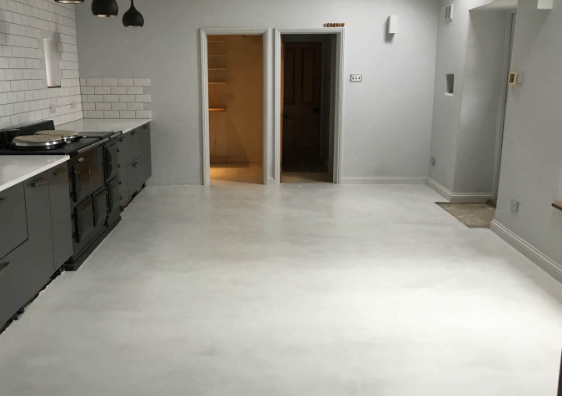 Microcement can be used to virtually any surface, and its toughness increases quickly as soon as it is applied. Suitable base surfaces may include cement mortar, cement, sand or even self-levelling screed, anhydrite screed, marble, terrazzo, plasterboard, tile and also plaster. This adaptability and versatility is true no matter if you are working with vertical surfaces or horizontal, and interior or even exterior areas.
Microcement can be used to virtually any surface, and its toughness increases quickly as soon as it is applied. Suitable base surfaces may include cement mortar, cement, sand or even self-levelling screed, anhydrite screed, marble, terrazzo, plasterboard, tile and also plaster. This adaptability and versatility is true no matter if you are working with vertical surfaces or horizontal, and interior or even exterior areas.
Microcement comes with extremely high adhesion. Therefore you may put it safely over any surfaces which would find it hard to take many other materials. It is also possible to use it directly on existing tiles that can quicken restorations, and steer clear of the trash of the original lining.
Among the advantages of microcement is how easy it is to know what the color, tone and finish will be like, well before it is installed. You will know precisely what you are getting, and whether or not it will eventually fit with your environment. And when you are unsure? Just consult the interior designer or contact Festfloor one of the best microcement suppliers in Poland.
Conceptually its content has several additives and also resins which enhance its flexibility, so it will not crack easily. This will make it a hardwearing, long-lasting and durable material. It has very low-permeability, that is why it can be utilized in outdoor areas, as well as bathrooms and kitchens.
Microcement does not need to be compacted. It eliminates the need for expensive heavy machinery. It will not shrink during installation either, meaning the result is totally free of folds or cracks. Microcement requires a full week to install from beginning to end. It may take light use after 2 days, but takes 30 days to completely harden.
It is a material with excellent durability that can last you for years in your house. However if you make a decision in the future to redecorate your home, microcement is really easy to install on a new surface.
